India recently started its Prototype fast breeder reactor (PFBR) into operation, progressing towards the second stage of its nuclear program.
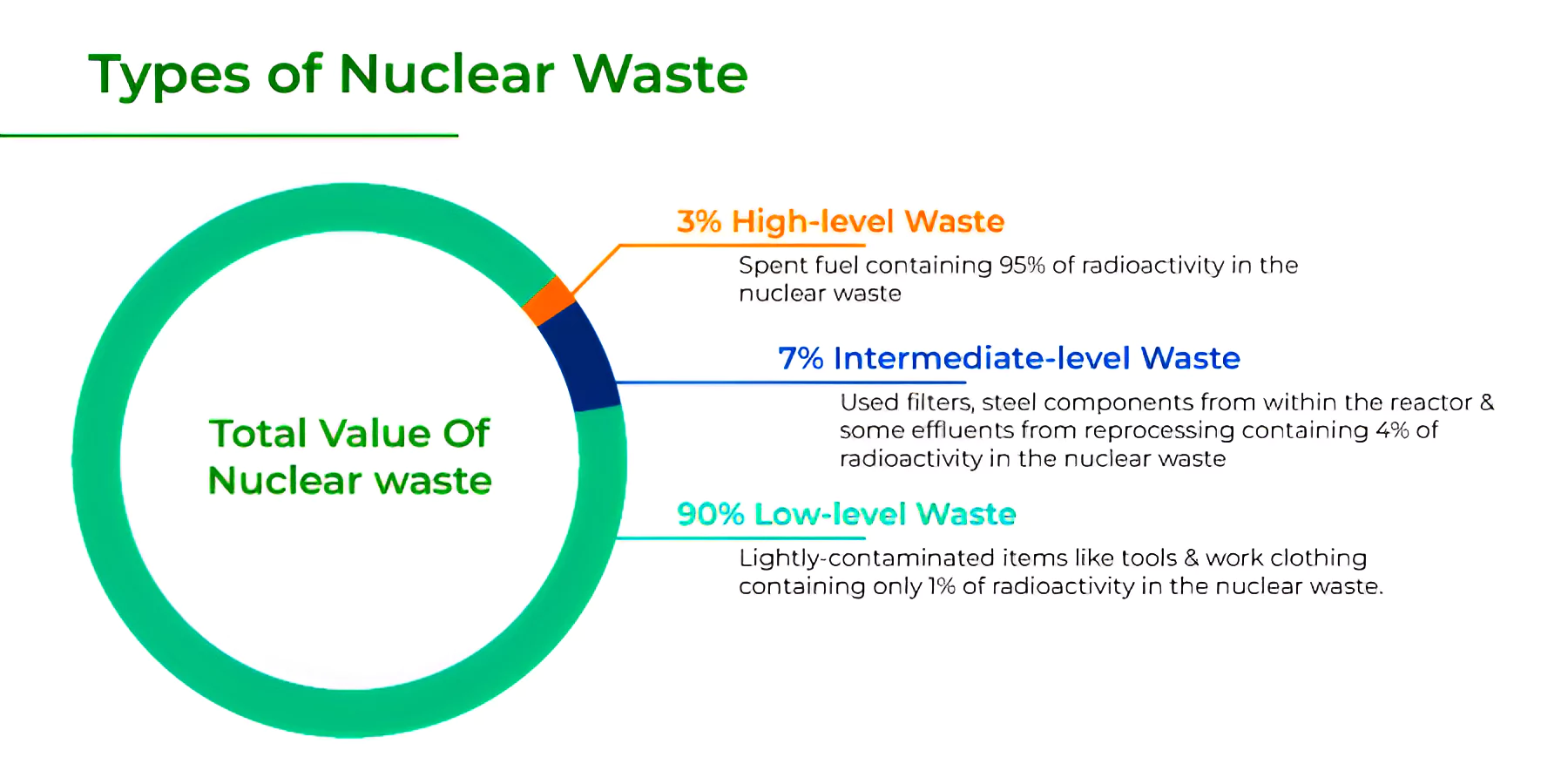
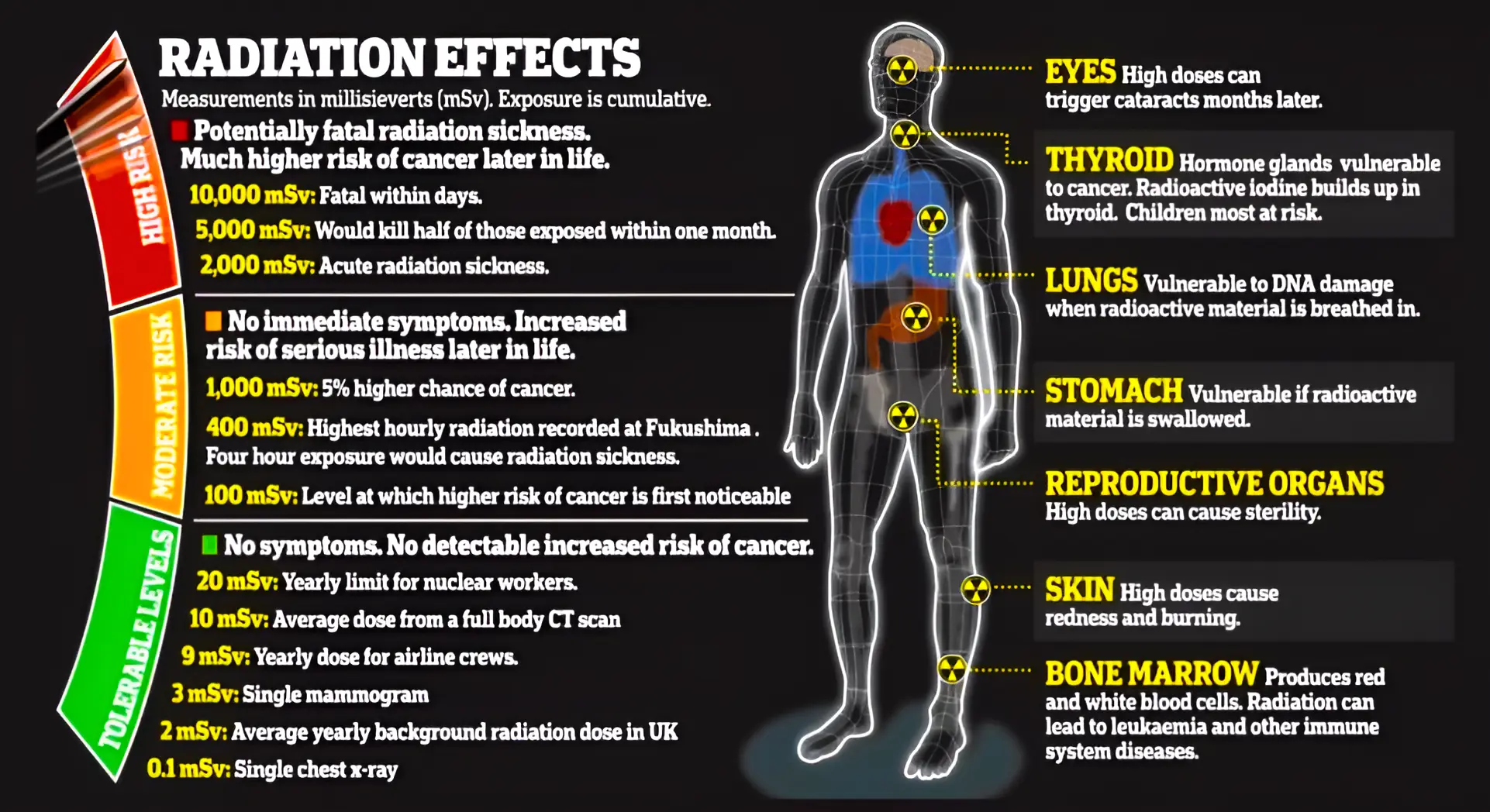
News Source: The Hindu
| Must Read | |
| NCERT Notes For UPSC | UPSC Daily Current Affairs |
| UPSC Blogs | UPSC Daily Editorials |
| Daily Current Affairs Quiz | Daily Main Answer Writing |
| UPSC Mains Previous Year Papers | UPSC Test Series 2024 |
The Union Cabinet had approved the proposal for signing of the said protocol for establishment of Joint Economic And Trade Committee (JETCO) between India and Dominican Republic.
About Dominican Republic
|
News Source: PIB
| Must Read | |
| NCERT Notes For UPSC | UPSC Daily Current Affairs |
| UPSC Blogs | UPSC Daily Editorials |
| Daily Current Affairs Quiz | Daily Main Answer Writing |
| UPSC Mains Previous Year Papers | UPSC Test Series 2024 |
News Source: PIB
| Must Read | |
| NCERT Notes For UPSC | UPSC Daily Current Affairs |
| UPSC Blogs | UPSC Daily Editorials |
| Daily Current Affairs Quiz | Daily Main Answer Writing |
| UPSC Mains Previous Year Papers | UPSC Test Series 2024 |
Recently Karnataka banned harmful dyes in Gobi Manchurian cotton candy, imposing imprisonment of up to seven years and fines of up to Rs 10 lakh for violators.
| Chemical | Description | Colour Produced |
| Tartrazine | Can induce allergic or pseudo-allergic reactions. | Yellow |
| Sunset Yellow | Can cause allergic or pseudo-allergic reactions. | Yellow |
| Carmoisine | May lead to skin rashes and respiratory allergies. | Red |
| Rhodamine-B | Considered carcinogenic; commonly used in textile dyeing and the paper industry. | Pink |

News Source: Indian Express
| Must Read | |
| NCERT Notes For UPSC | UPSC Daily Current Affairs |
| UPSC Blogs | UPSC Daily Editorials |
| Daily Current Affairs Quiz | Daily Main Answer Writing |
| UPSC Mains Previous Year Papers | UPSC Test Series 2024 |
The Maharashtra cabinet recently asked the Ministry of Railways to rename Mumbai Central Station after Nana Jagannath Shankarseth.
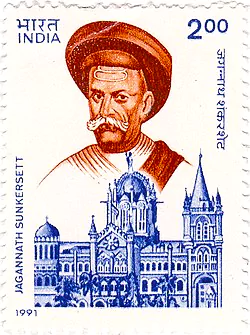 Contributions: He contributed valuable ideas and money to multiple sectors to lay a strong foundation for the city.
Contributions: He contributed valuable ideas and money to multiple sectors to lay a strong foundation for the city.News Source: Indian Express
| Must Read | |
| NCERT Notes For UPSC | UPSC Daily Current Affairs |
| UPSC Blogs | UPSC Daily Editorials |
| Daily Current Affairs Quiz | Daily Main Answer Writing |
| UPSC Mains Previous Year Papers | UPSC Test Series 2024 |
Recently the Shahed-model drone killed three U.S. service members at in Jordan is built by Shahed Aviation Industries Research Center, an Iranian company
Features of Drone Swarms:
|
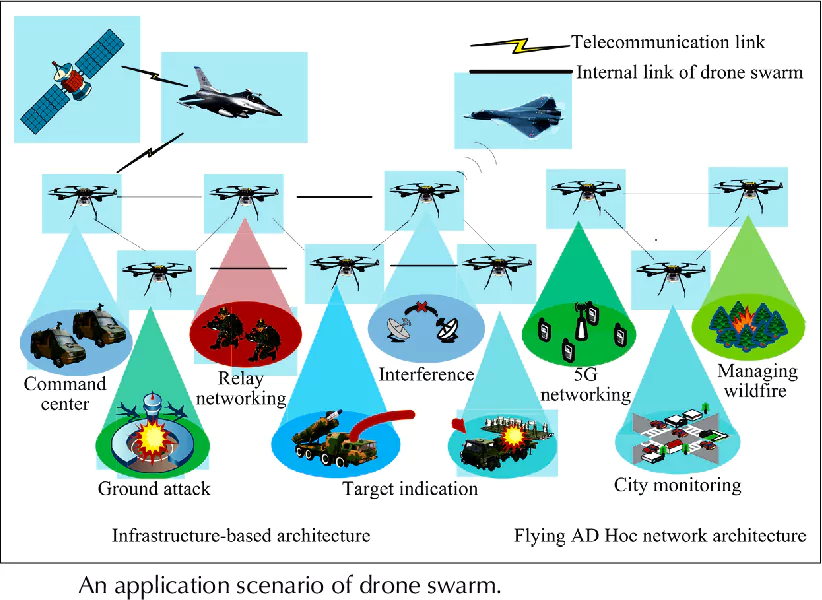
Drone regulations in India
|
News Source: Livemint
| Must Read | |
| NCERT Notes For UPSC | UPSC Daily Current Affairs |
| UPSC Blogs | UPSC Daily Editorials |
| Daily Current Affairs Quiz | Daily Main Answer Writing |
| UPSC Mains Previous Year Papers | UPSC Test Series 2024 |
The NPCI has given permission to One97 Communications Limited (OCL), which owns Paytm, to work as a Third Party Application Provider (TPAP) under the multi-bank model for Unified Payments Interface (UPI) services.
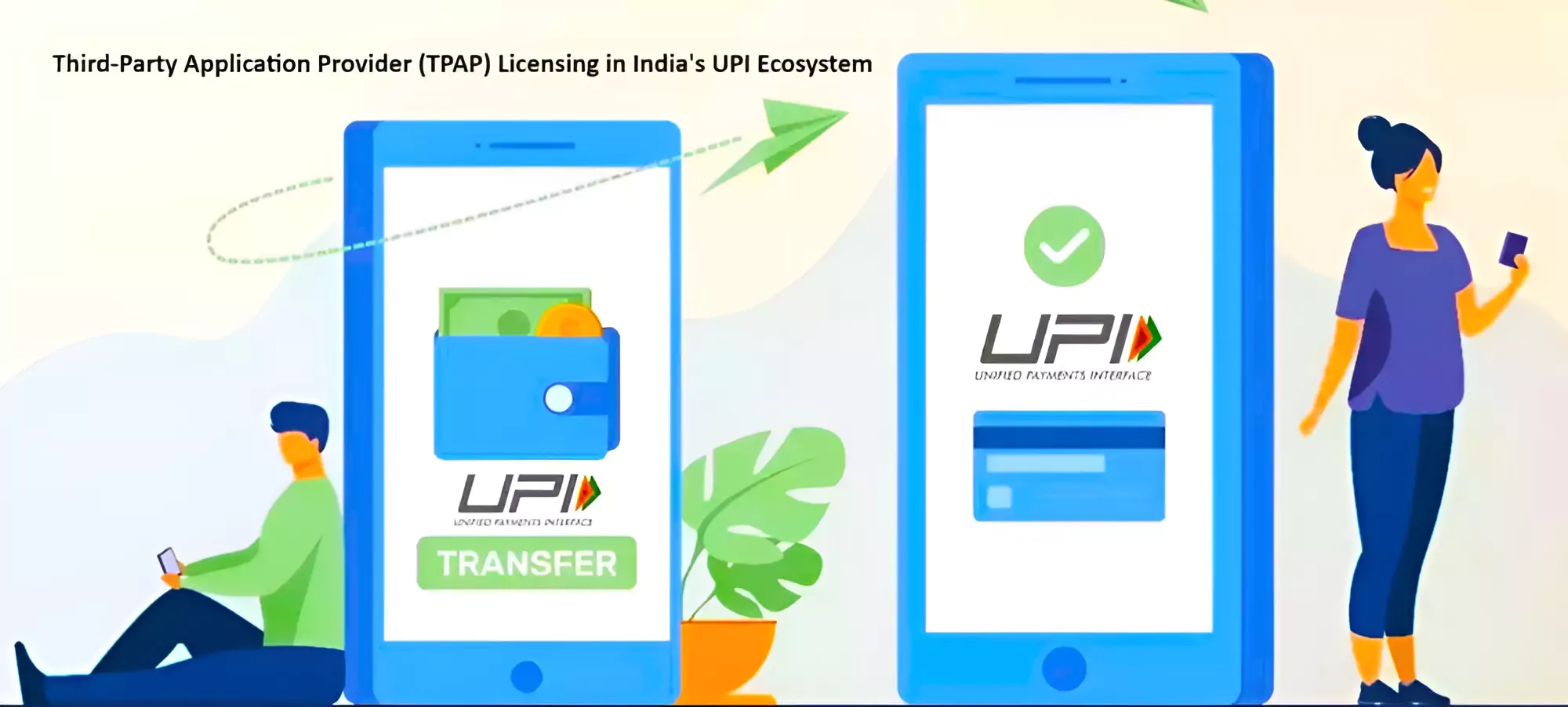
What is TPAP (Third Party Application Provider)?
|
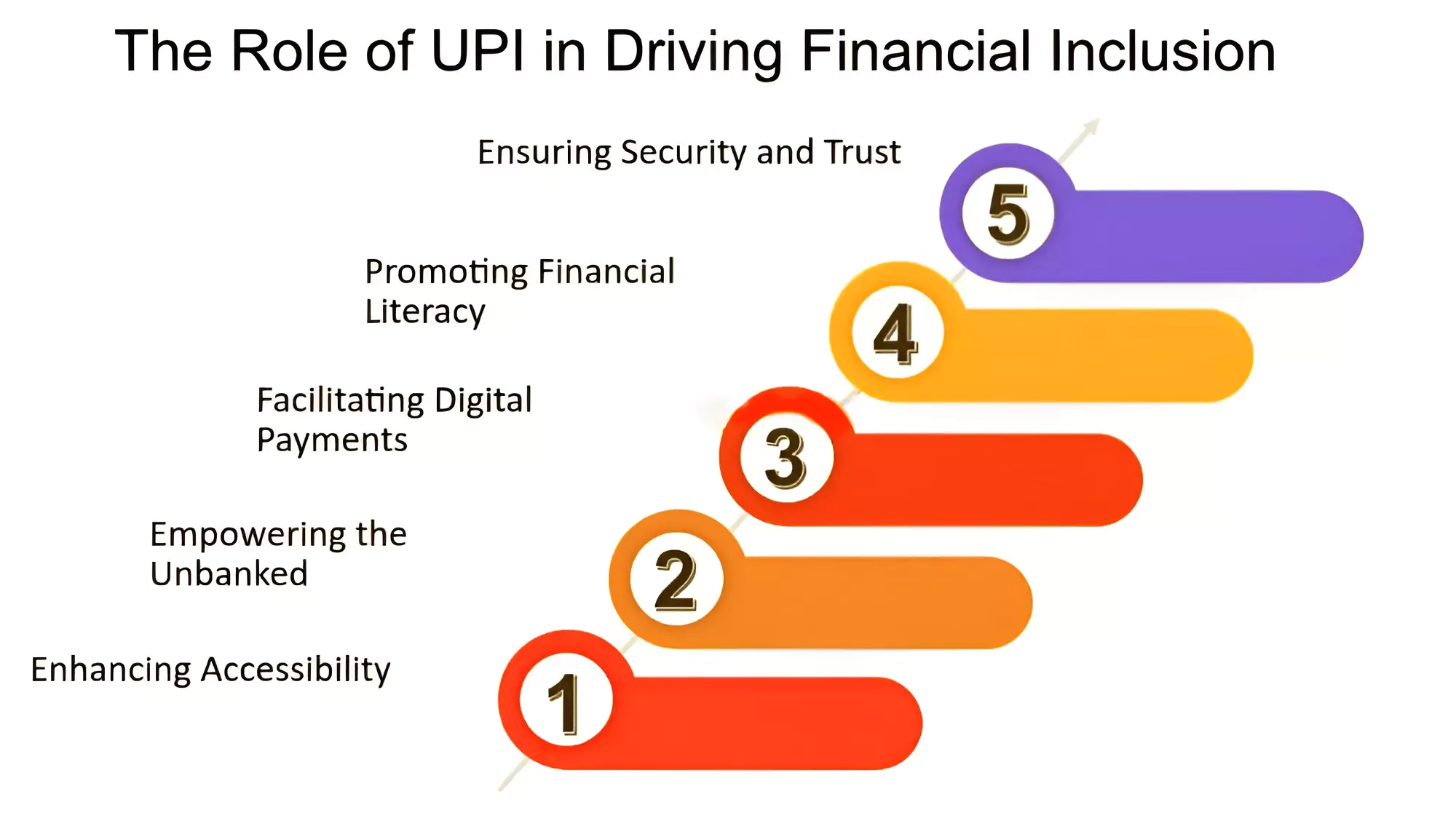
Payment System Providers (PSPs) play a very important role in the Unified Payments Interface (UPI) ecosystem.
News Source: Moneycontrol.com
| Must Read | |
| NCERT Notes For UPSC | UPSC Daily Current Affairs |
| UPSC Blogs | UPSC Daily Editorials |
| Daily Current Affairs Quiz | Daily Main Answer Writing |
| UPSC Mains Previous Year Papers | UPSC Test Series 2024 |
During his two-day visit to India, the Foreign Minister of Belarus declared that India is considering starting talks for a free trade agreement (FTA) with the Eurasian Economic Union (EAEU).
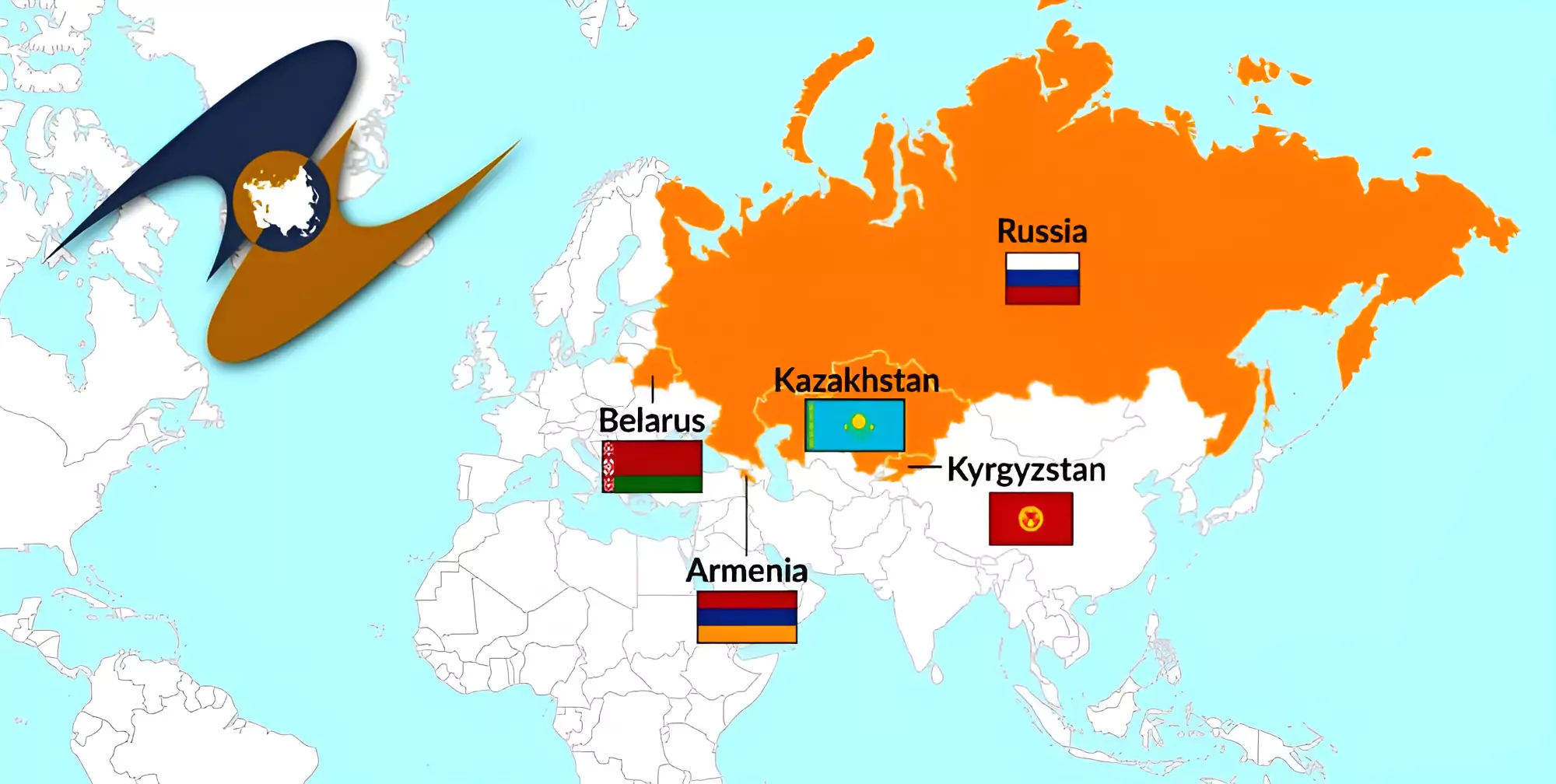
News Source: The Hindu
| Must Read | |
| NCERT Notes For UPSC | UPSC Daily Current Affairs |
| UPSC Blogs | UPSC Daily Editorials |
| Daily Current Affairs Quiz | Daily Main Answer Writing |
| UPSC Mains Previous Year Papers | UPSC Test Series 2024 |
Recently, nature lovers and many tourists have visited the Atapaka Bird Sanctuary, where thousands of migratory birds have arrived at Kolleru Lake.
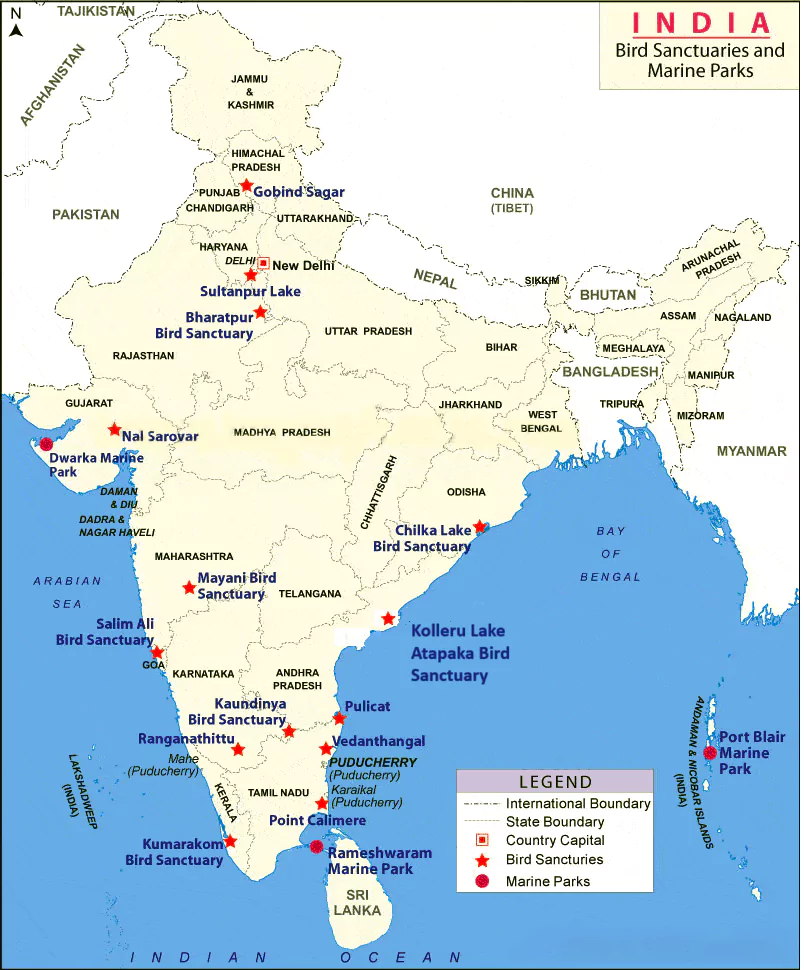
News Source: The Hindu
| Must Read | |
| NCERT Notes For UPSC | UPSC Daily Current Affairs |
| UPSC Blogs | UPSC Daily Editorials |
| Daily Current Affairs Quiz | Daily Main Answer Writing |
| UPSC Mains Previous Year Papers | UPSC Test Series 2024 |
Recently, The Government of India has launched a pilot program to provide cashless treatment to the victims of road accidents caused by the use of motor vehicles.
Golden Hour: According to the Motor Vehicles Amendment Act, 2019,
Motor Vehicle Accident Fund:
|
The Integrated Road Accident Database (iRAD) / e-Detailed Accident Report (eDAR) Project
Good Samaritan Scheme
|
News Source: The Hindu
| Must Read | |
| NCERT Notes For UPSC | UPSC Daily Current Affairs |
| UPSC Blogs | UPSC Daily Editorials |
| Daily Current Affairs Quiz | Daily Main Answer Writing |
| UPSC Mains Previous Year Papers | UPSC Test Series 2024 |
This Article is based on the news “’Our estimates & those on Tendulkar formula show poverty fall over 12 yrs’ which was published in the Business Standard. Economists C Rangarajan and S Mahendra Dev have released the poverty estimates in India based on the latest Household Consumption Expenditure Survey(HCES) by updating poverty lines recommended by the Rangarajan committee.
| Relevancy for Prelims: Poverty And Development Issues, Regional Income Disparities In India, and All India Household Consumption Expenditure Survey,
Relevancy for Mains: Rethinking Methods For Poverty Estimation in India: Need, Challenges, and Solutions. |
Household Consumption Expenditure Survey (HCES)
Gini coefficient, or the Gini index:
|
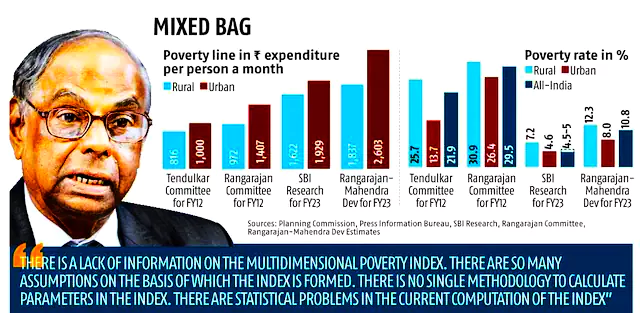
Other Recent Poverty Estimates in India
|
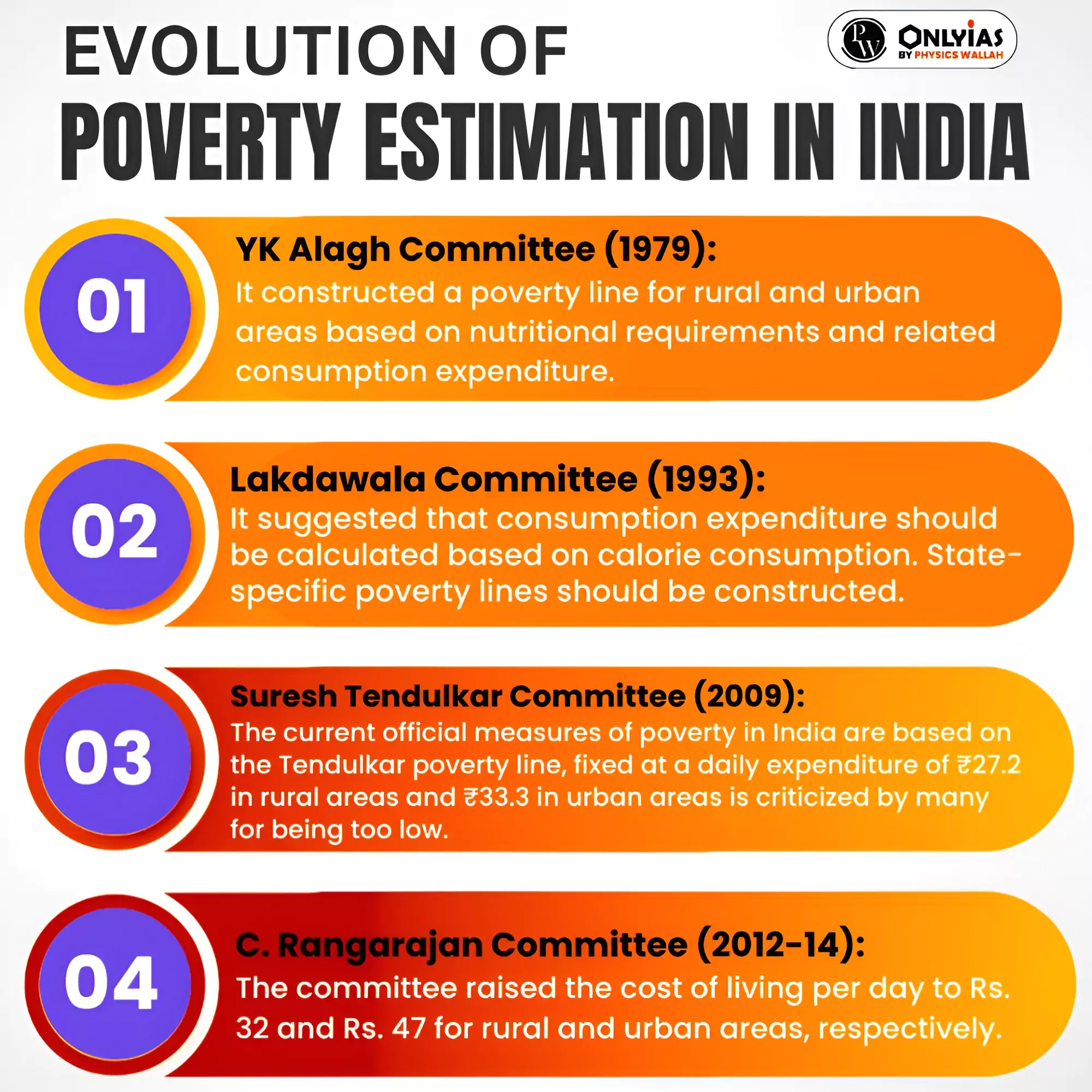
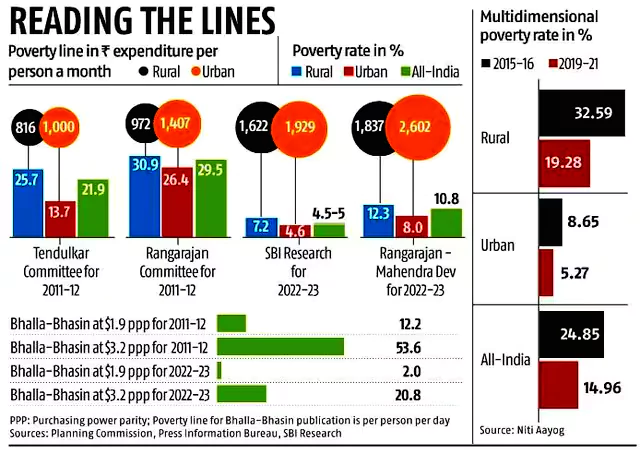
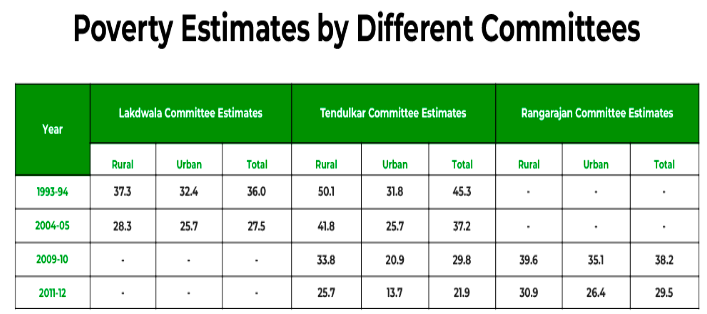
Sources of Consumption Expenditure in India
|
| Prelims PYQ (2018):
With reference to the provisions made under the National Food Security Act, 2013, consider the following statements: 1. The families coming under the category of ‘below poverty line (BPL)’ only are eligible to receive subsidies food grains. 2. The eldest woman in a household, of age 18 years or above, shall be the head of the household for the purpose of issuance of a ration card. 3. Pregnant women and lactating mothers are entitled to a ‘take-home ration’ of 1600 calories per day during pregnancy and for six months thereafter. Which of the statements given above is/are correct? (a) 1 and 2 (b) 2 only (c) 1 and 3 (d) 3 only Ans: (b) |
| Mains Question: Establish the relationship between land reform, agriculture productivity and elimination of Poverty. (10 marks, 150 words) |
| Must Read | |
| NCERT Notes For UPSC | UPSC Daily Current Affairs |
| UPSC Blogs | UPSC Daily Editorials |
| Daily Current Affairs Quiz | Daily Main Answer Writing |
| UPSC Mains Previous Year Papers | UPSC Test Series 2024 |
This Article is based on the news “What it will take to have simultaneous elections in India: Unpacking the Kovind committee report” which was published in the Indian Express. The High-level Committee (HLC) on One Nation One Election, chaired by former President Ram Nath Kovind, recently submitted its report to the President.
| Relevancy for Prelims: Federalism, One Nation One Election, President Of India, Election Commission Of India, Electoral Bond Scheme, Limits On Election Campaign Spending and Intra Party Democracy.
Relevancy for Mains: One Nation One Election: Key Highlights of the Kovind Committee Report. |
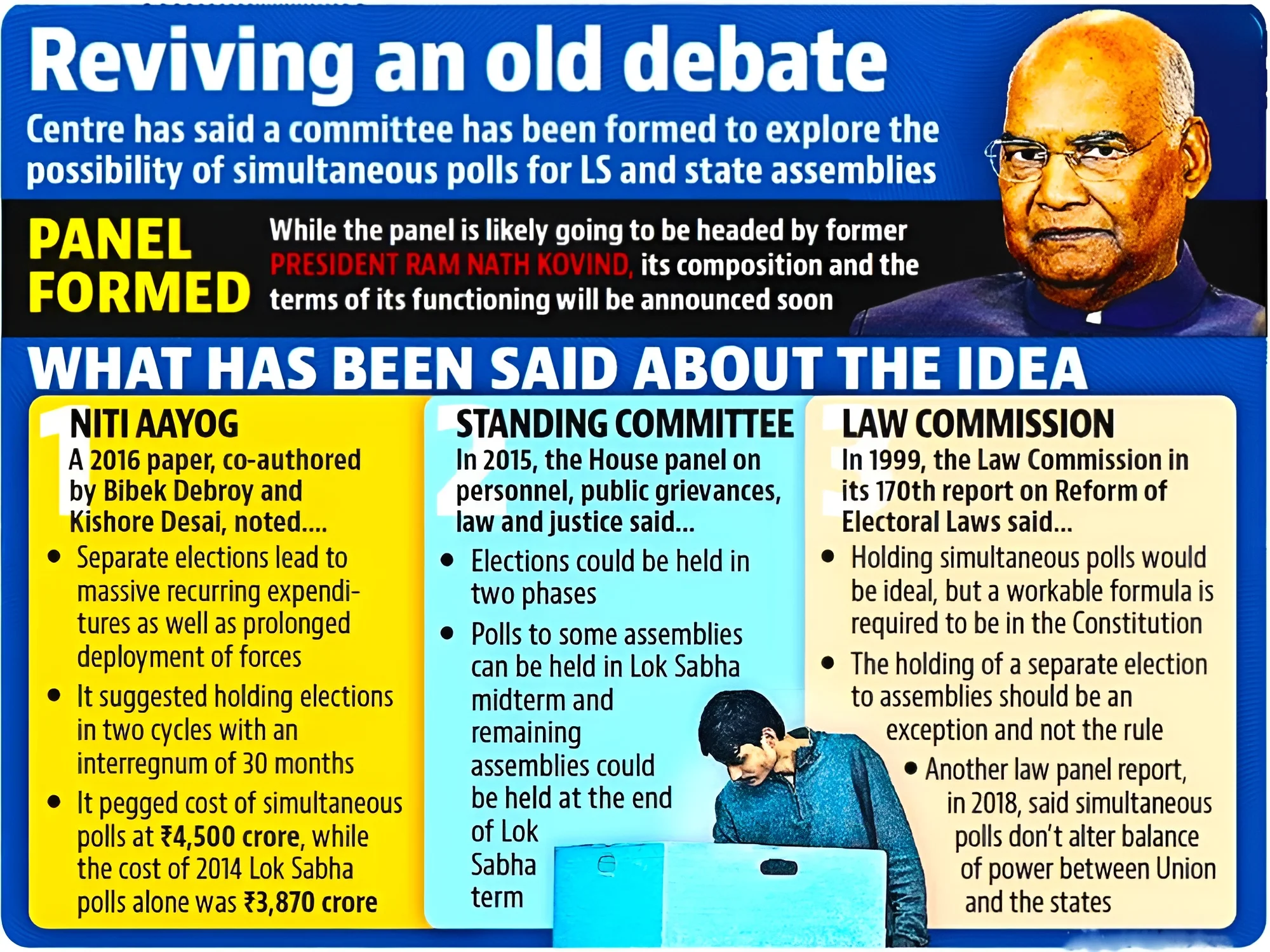
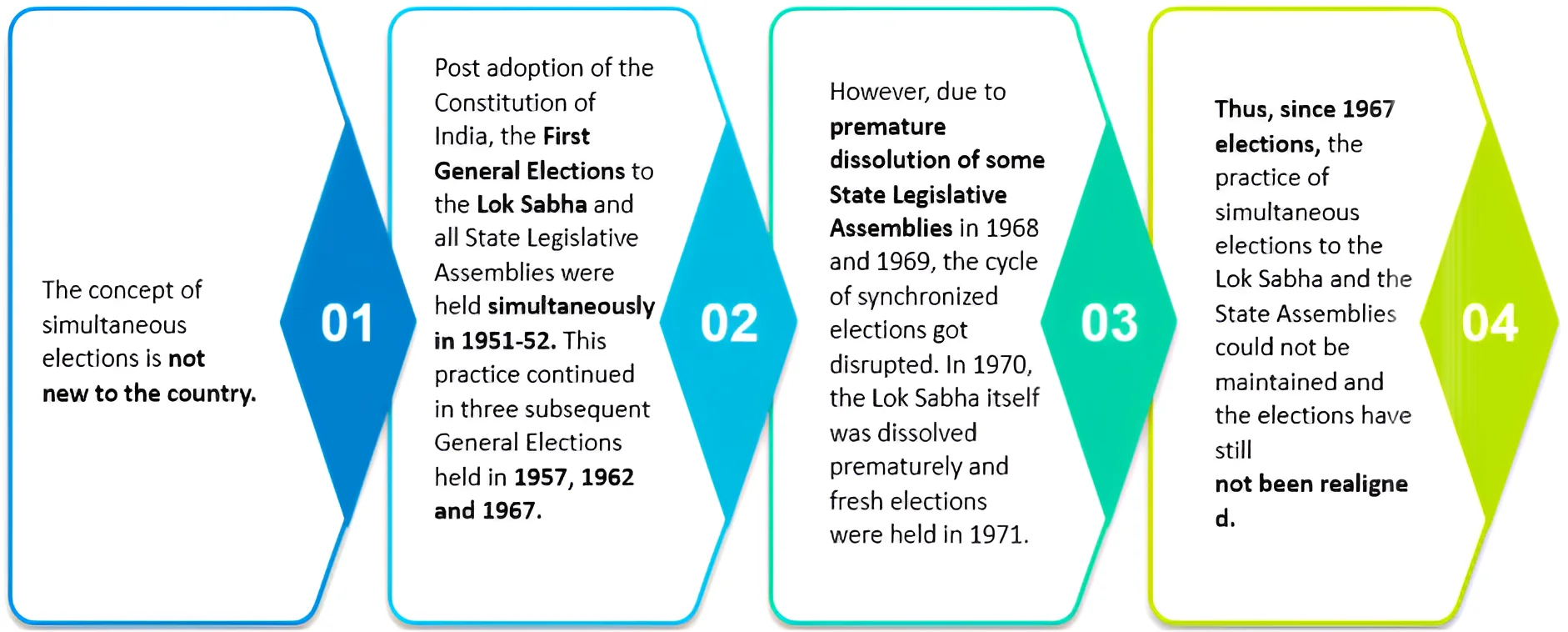
Committees and Reports:
|
Global Perspective:
|
It is important that the recommendations are taken forward only with a wider political consensus. This is crucial because most national parties are not in favour of the idea. Holding simultaneous elections is not an end worth achieving if it undermines democratic values.
| Prelims PYQ (2020):
Consider the following statements: 1. According to the Constitution of India a person who is eligible to vote can be made a minister in a State for six months even if he/she is not a member of the Legislature of that State 2. According to the Representation of People Act, 1951, a person convicted of a criminal offence and sentenced to imprisonment for five years is permanently disqualified from contesting an election even after his release from prison Which of the statements given above is are correct? (a) 1 only (b) 2 only (c) Both 1 and 2 (d) Neither 1 nor 2 Ans: (d) |
| Mains Question: In the context of the Ram Nath Kovind panel report, Discussing the pros and cons of simultaneous elections in India. (10 marks, 150 words) |
| Must Read | |
| NCERT Notes For UPSC | UPSC Daily Current Affairs |
| UPSC Blogs | UPSC Daily Editorials |
| Daily Current Affairs Quiz | Daily Main Answer Writing |
| UPSC Mains Previous Year Papers | UPSC Test Series 2024 |
SC Verdict on Newsclick Shows Adherence to Due Pro...
Stay Invested: On Chabahar and India-Iran Relation...
Credit Rating Agencies, Impact on India’s De...
Catapulting Indian Biopharma Industry
Globalisation Under Threat, US Import Tariffs Have...
Global Report on Hypertension, Global Insights and...
<div class="new-fform">
</div>
